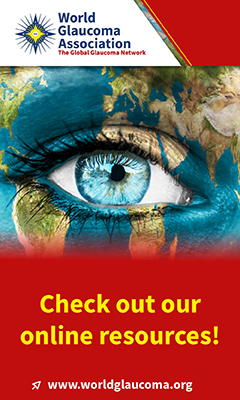
Highlights of the Annual South African Glaucoma Society Meeting
May 26-28, 2006, Drakensberg, South Africa
| Ellen Ancker
Impact of glaucoma
- 53% of glaucoma patients have concomitant disease; 27%
cardiovascular, 16% respiratory; 10% arthritis.
- The average lifetime of a glaucoma patient is 13.5 years because
of the late diagnosis.
- 16 % of glaucoma patients with advanced VF damage have a history
of hip or wrist fracture; only 10% of blind people are still
working.
- Savings in estimated costs of treatment of a POAG patient of 3%
per 1 mmHg additional IOP lowering from about $17,000 per patient
per year.
Risk factors
- Risk factors need to be established for every patient
individually at the time of diagnosis and need periodical
re-evaluation.
- The Star-Scoring Tool for Assessing Risk is not evidence based,
a physician's experience is still necessary.
- Diurnal IOP is not an independent risk factor in OHT.
ONH evaluation
- Applying the ISNT rule helps to systematically evaluate the
optic nerve head in glaucoma and ocular hypertension patients.
- Look for position of the vessel trunk and notching when
evaluating the ONH for progression.
- ONH needs documentation with stereo colour photos or sequential
stereo photos or digital imaging.
- Measure optic disc size if macro or micro disc.
- It normally takes about five years from visible retinal nerve
fibre layer changes until significant visual field changes are seen.
Treatment
- 15% of glaucoma patients miss more than 50% of their drug
dosage.
- In 40% of glaucoma patients mono therapy is not enough. When
adjunctive therapy is needed use therapies with complimentary modes
of action, i.e. on inflow and outflow pathways.
General
- An acute attack of angle-closure is not glaucoma; if the optic
nerve and visual field are normal, it is only an acute
angle-closure.
- Technique of laser trabeculoplasty: start at six o'clock, always
rotate clockwise, burn at trabecular meshwork, take IOP six hours
later, treat with CAI alpha-agonists and topical steroids for one
week.
- Consider ALT as a primary procedure in pigmentary glaucoma,
pseudo-exfoliation, and above 60 years of age.
- The first morphological changes of bilateral optic neuropathy
take place in the lateral geniculate nucleus.
- Early aggressive treatment in glaucoma may be indicated
when:
- presenting IOP is high;
- there is advanced glaucomatous damage at presentation;
- there is an advanced rate of glaucomatous damage
progression;
- central vision loss is expected within lifetime;
- there are risk factors, such as advanced glaucoma in second
eye.
Issue 8-2
Change Issue
advertisement

|



